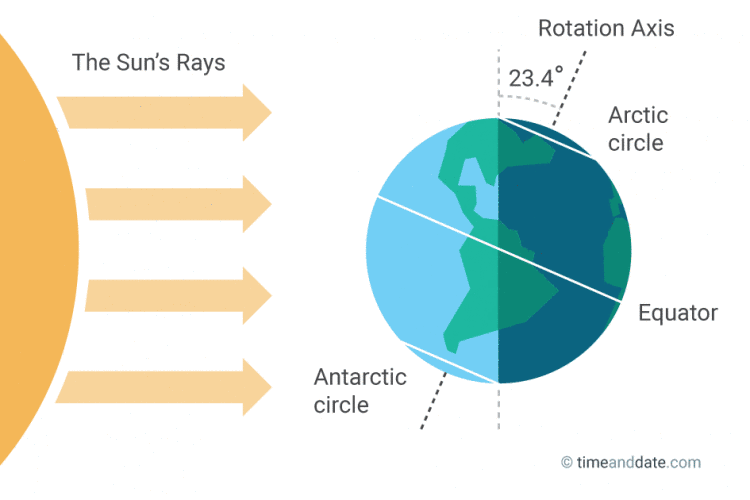15
Dec
2017
Here Comes the Sun
I was looking up “winter solstice” just to make sure I was thinking about the term right, and I came across this cool diagram. Although we all know (if vaguely) that the tilt of the Earth explains the seasons and the length of the day (though I think these are subtly different effects), for some reason this diagram really drove it home for me in a way that my textbooks as a kid never did.
So, here ya go, taken from this website:








Sadly, we don’t all know about the tilt of the earth and the seasons.
Someone once threatened me with violence when I contradicted his claim that the Earth was closest to the Sun in July and furthest away in January. He called me idiot for not being able to notice that Summer was warmer than Winter. At first, I thought he had to be joking in a self-deprecating manner, so I played along for about a minute or two before I suddenly found him in my face threatening to kick my ass for being such a moron. Since this was before the age of the internet, there were no smartphones one could Google on to settle the matter, and no one else present chirped up to back me up. So, I don’t find it at all surprising that Harvard grads didn’t know this, and I suspect that this applies to most people, not just some.
Did you ask him to explain how the seasons are reversed in Australia (Christmas is hot, July is cold) ?
From a judicious safe distance I mean.
That’s awesome Josiah.
While that diagram nails the flatness of Earth, it does a terrible job laying out the land. Half the land is missing in that picture. Idiots. And the sun is correctly shown to be very close but it’s way too big.
Next, you can memorize the angle of the sun at noon in your town on various dates through the year. That angle is what actually what determines the seasons at your location. The noon sun angle in Detroit on February 28 is around 39.9 degrees above the horizon but the average high temperature is only around 40 F. This website has the noon sun angles and day length for most big cities:
https://www.timeanddate.com/sun/usa/detroit?month=2&year=2018
The noon sun angle for Houston, Texas in December is never as high as 39.9 degrees off the horizon but the average high temperature is around 64 degrees F.
https://www.timeanddate.com/sun/usa/houston?month=12&year=2017
Places north of the Tropic of Cancer and south of the Tropic of Capricorn have their highest and/or lowest sun day around June 21/December 21. However, areas between those latitudes have the highest sun angle of 90 degrees above the horizon twice a year, neither of which is on June or December 21.
https://www.timeanddate.com/sun/belize/belize-city?month=5&year=2018
Also if interest, although the shortest day (N Hemisphere) is 21 Dec., the earliest sunset is earlier, depending on latitude around 12th December. For most of us evenings are already getting longer.
An interesting thing I never thought about before seeing these charts was that (at least for Detroit) the noon sun angle and the day length barely change between mid-November and the end of January. Then in February, the daily change is significant up until around mid-May when the sun angle and day length tops out and stays there until the end of July. Starting in August, the noon sun angle and day length go down significantly each day until mid-November.
So it makes no sense to “watch the clock” or day length or sun angle this time of year.
As someone who lives very far North, I can attest to how striking the effect is. In the dead of winter (such as it is now), the sun barely peaks over the mountains at midday, and sets again shortly after. In the summer, though, it swirls around the sky without truly setting.
Go much farther North and you get into the territory where the sun rises once a year, in April, and sets once a year in October. It’s wild.